Guest post by Miguel Angel Valladares-Llata, Librarian for Romance Languages and Latin American Studies
Here I present my selection of books to celebrate Hispanic Heritage Month (Sep. 15 – Oct 15, 2024). Six books are included in this list; one inspirational for UVA’s own Latino community; another two describe a current painful reality for the Latino community in the U.S., and three of the books celebrate the literary and vital creativity of Latino writers and poets. Enjoy!
“The Power of Latino Leadership: Culture, Inclusion, and Contribution” by Juana Bordas (Berrett-Koehler Publishers, 2023)
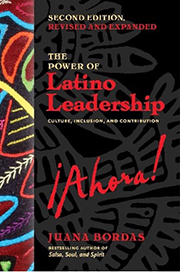 This book is a second edition (in ebook format) initially published ten years ago. Juana Bordas, originally from Nicaragua is a well-known activist based in Colorado, where she has been promoting Latino and Latina leadership since the 1990s, founding organizations such as Mi Casa Resource Center for Women, the National Hispana Leadership Institute, and Mestiza Leadership International. Now she is publishing a second revised and enlarged edition where she updated her original book with new voices and experiences of other distinguished Latino leaders. We can affirm that Bordas offers us a succinct extrapolation of her personal experience with ten principles she identifies in the ways Latinos have led their communities. Personally, I want to highlight her definition of who is a Latino or Latina:
This book is a second edition (in ebook format) initially published ten years ago. Juana Bordas, originally from Nicaragua is a well-known activist based in Colorado, where she has been promoting Latino and Latina leadership since the 1990s, founding organizations such as Mi Casa Resource Center for Women, the National Hispana Leadership Institute, and Mestiza Leadership International. Now she is publishing a second revised and enlarged edition where she updated her original book with new voices and experiences of other distinguished Latino leaders. We can affirm that Bordas offers us a succinct extrapolation of her personal experience with ten principles she identifies in the ways Latinos have led their communities. Personally, I want to highlight her definition of who is a Latino or Latina:
Latinos are inherently diverse. They are white, [ and black] brown, red, chocolate, or latte and all the colors in between. From a historical context, Latinos are hybrids—mainly the Spanish and Indigenous people of this hemisphere, but many Latinos have mixed ancestry from other countries. Latino leaders have to motivate and guide people who come from many backgrounds and races.
“Magical Urbanism: Latinos Reinvent the US City” by Mike Davis (Verso, 2024)
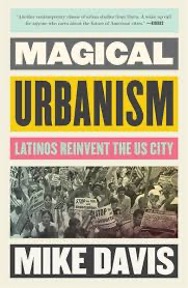 Mike Davis, who unfortunately left us almost two years ago as a result of cancer, was an American writer, political activist, urban theorist, and historian, recognized for his research into how the concept of power affects different social classes in the United States. Over his lifetime, Mike Davis wrote more than 20 books — all very revealing works about social conflicts in the United States. But I want to highlight his personal contribution to Latino Studies, in which he studies and analyzes the social, economic, educational, racial, linguistic, legal, and demographic nature of Latino emergence in urban America. Originally published in 2000 and revised by the author before his death, “Magical Urbanism” has recently been published, and is considered by critics as a “political manifesto that stands as a powerful statement on modern America.” Also available in eBook format.
Mike Davis, who unfortunately left us almost two years ago as a result of cancer, was an American writer, political activist, urban theorist, and historian, recognized for his research into how the concept of power affects different social classes in the United States. Over his lifetime, Mike Davis wrote more than 20 books — all very revealing works about social conflicts in the United States. But I want to highlight his personal contribution to Latino Studies, in which he studies and analyzes the social, economic, educational, racial, linguistic, legal, and demographic nature of Latino emergence in urban America. Originally published in 2000 and revised by the author before his death, “Magical Urbanism” has recently been published, and is considered by critics as a “political manifesto that stands as a powerful statement on modern America.” Also available in eBook format.
“Unbuild Walls: Why Immigrant Justice Needs Abolition” by Silky Shah (Haymarket Books, 2024)
 Although immigration as a problem in the United States today is not limited to the Latino community, it can be said that the problem affects the reality of the entire Latino community. With this book Silky Shah, an immigration activist (Executive Director of Detention Watch Network), illustrates from her own experience how the immigration system is related to the prison industrial complex for more than 20 years, affecting current U.S. politics, perceptions of social groups, and political decisions. “In the wake of post-9/11 xenophobia, Obama's record-level deportations, Trump's immigration policies, and the 2020 uprisings for racial justice, the U.S. remains entrenched in a circular discourse regarding migrant justice,” Shah writes. As a solution, she proposes a potentially radical one, certainly one that is innovative, and even unrealistic: prison abolition. To provoke a transformative social reform that can liberate a society in conflict, creative solutions are needed. We can give her perspectives a chance.
Although immigration as a problem in the United States today is not limited to the Latino community, it can be said that the problem affects the reality of the entire Latino community. With this book Silky Shah, an immigration activist (Executive Director of Detention Watch Network), illustrates from her own experience how the immigration system is related to the prison industrial complex for more than 20 years, affecting current U.S. politics, perceptions of social groups, and political decisions. “In the wake of post-9/11 xenophobia, Obama's record-level deportations, Trump's immigration policies, and the 2020 uprisings for racial justice, the U.S. remains entrenched in a circular discourse regarding migrant justice,” Shah writes. As a solution, she proposes a potentially radical one, certainly one that is innovative, and even unrealistic: prison abolition. To provoke a transformative social reform that can liberate a society in conflict, creative solutions are needed. We can give her perspectives a chance.
“Craft: Stories I Wrote for the Devil” by Ananda Lima (Tor Books, 2024)
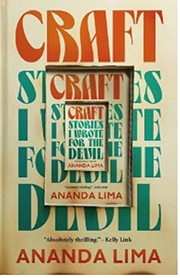 Ananda Lima is a Brazilian-American poet, fiction writer, and translator, born in Brazil, who has lived in the United States for 20 years. Her first poetry book — “Translation,” published in 2019, was the winner of the 2018 Vella Chapbook Contest. Now she’s published this short fiction collection, described as a novel-in-stories that begins at a Halloween party in 1999, where a writer sleeps with the devil. After this meeting, the writer tells us a succession of surreal stories that sketch reverberations of Brazilian tradition in an American landscape. My favorite story is “Antropófaga,” where Lima excellently fictionalizes a modernist cultural movement in the United States that emerged in Brazil in the 1920s. In this world, the so-called Manifesto Antropófago group proposes “cannibalizing whatever you wanted from European culture and processing it into your Brazilian identity”; this means the colonized eat the colonizers. As Lima points out “this is very true for an immigrant person in a different context.”
Ananda Lima is a Brazilian-American poet, fiction writer, and translator, born in Brazil, who has lived in the United States for 20 years. Her first poetry book — “Translation,” published in 2019, was the winner of the 2018 Vella Chapbook Contest. Now she’s published this short fiction collection, described as a novel-in-stories that begins at a Halloween party in 1999, where a writer sleeps with the devil. After this meeting, the writer tells us a succession of surreal stories that sketch reverberations of Brazilian tradition in an American landscape. My favorite story is “Antropófaga,” where Lima excellently fictionalizes a modernist cultural movement in the United States that emerged in Brazil in the 1920s. In this world, the so-called Manifesto Antropófago group proposes “cannibalizing whatever you wanted from European culture and processing it into your Brazilian identity”; this means the colonized eat the colonizers. As Lima points out “this is very true for an immigrant person in a different context.”
“The Great Divide: A Novel” by Cristina Henríquez (Ecco, 2024)
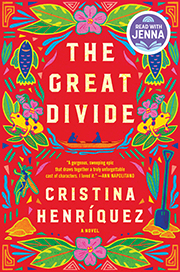 Cristina Henríquez is an American author born in Delaware. Her father was from Panama — a country that she visited often during her childhood, and that became a recurrent topic in her literature. Now she is publishing her fourth book in which she fictionalizes the construction of the Panama Canal. In this “powerful novel” Henriquez creates a kaleidoscope of fictional characters who participate in the construction of the canal, and through which, thanks to their rich interconnections, Henriquez offers us a very personal vision of this great work of engineering that not even history books have achieved.
Cristina Henríquez is an American author born in Delaware. Her father was from Panama — a country that she visited often during her childhood, and that became a recurrent topic in her literature. Now she is publishing her fourth book in which she fictionalizes the construction of the Panama Canal. In this “powerful novel” Henriquez creates a kaleidoscope of fictional characters who participate in the construction of the canal, and through which, thanks to their rich interconnections, Henriquez offers us a very personal vision of this great work of engineering that not even history books have achieved.
“There is a Rio Grande in Heaven: Stories” by Ruben Reyes Jr. (Mariner Books, 2024)
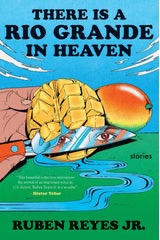 Here you have a book that emerged strongly from the “new America” — so criticized and stigmatized by sectors of our society that try to criminalize everything they do not understand. Ruben Reyes Jr., a son of that ‘new America’, presents us a wonderful exercise in optimism in his literary debut where the choral voices of Central America redefine what identity means. With surreal and almost ghostly tones, he illuminates the different realities of a population that unfortunately lives in the margins of our rich and opulent society. Ruben Reyes Jr. came from that society, crossing that imaginary and heavenly Rio Grande. From this side of his reality, after “succeeding” at Harvard, and now publishing in multiple current magazines, he gives voice to his community, one that is and will be an important part of the “new America.” This book will be very important for all Americans, but especially for those that just crossed the Rio Grande. My favorite short story is “The Salvadoran Slice of Mars.”
Here you have a book that emerged strongly from the “new America” — so criticized and stigmatized by sectors of our society that try to criminalize everything they do not understand. Ruben Reyes Jr., a son of that ‘new America’, presents us a wonderful exercise in optimism in his literary debut where the choral voices of Central America redefine what identity means. With surreal and almost ghostly tones, he illuminates the different realities of a population that unfortunately lives in the margins of our rich and opulent society. Ruben Reyes Jr. came from that society, crossing that imaginary and heavenly Rio Grande. From this side of his reality, after “succeeding” at Harvard, and now publishing in multiple current magazines, he gives voice to his community, one that is and will be an important part of the “new America.” This book will be very important for all Americans, but especially for those that just crossed the Rio Grande. My favorite short story is “The Salvadoran Slice of Mars.”
If you want to take a class, find resources, meet people, drink a coffee, or learn more about the Latinx community at UVA and beyond, check out the following resources:
Latinx Student Center: provides an inclusive environment that supports the intersectional experiences, diverse cultures, and educational goals of Latinx students at the University of Virginia.
Latinx Leadership Institute: an eight-week, student-facilitated, and cohort-based leadership development program for first-, second- and third-year transfer Hispanic/Latinx emerging leaders. Recruitment takes place in the fall, ahead of sessions which typically take place in the spring semester, culminating in a final presentation in which participants present their findings on a semester-long project tackling issues within the Hispanic/Latinx community.
Hispanic - Latinx Peer Mentoring Program: The Hispanic/Latinx Peer Mentoring Program (PMP) is a program to assist in the transition of incoming students. Student mentors draw from their own experience at the University of Virginia as well as from their training to inform and guide newer students who are making the transition from their previous institution to the diverse academic, intellectual and social culture that they find here.
Latino Studies Faculty at UVA
- Anneleise Azúa, Assistant Professor of American Studies
- Rose Buckelew, Associate Professor of Sociology, General Faculty
- Federico Cuatlacuatl, Associate Professor of Digital Art
- Nichole M. Flores, Associate Professor of Religious Studies
- Carmen Lamas, Associate Professor of Latina/o Literature and Latina/o Studies
- Paulina Ochoa Espejo, John L. Nau III Professor of the History and Principles of Democracy
- Natalia Palacios, Associate Professor of Education in the Educational Psychology
- Sebastian Tello Trillo, Associate Professor of Public Policy and Economics
Latino Studies librarians at UVA:
- Sherri Brown, Librarian for English
- Miguel Angel Valladares, Latino Studies librarian
